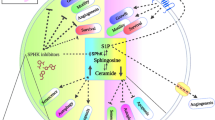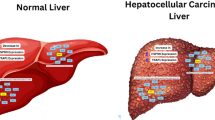Abstract
Development of novel anti-cancer drug leads that target regulators of protein homeostasis is a formidable task in modern pharmacology. Finding specific inhibitors of human Heat Shock Factor 1 (hHSF1) has proven to be a challenging task, while screening for inhibitors of human Heat Shock Factor 2 (hHSF2) has never been described. We report the development of a novel system based on an in vivo cell growth restoration assay designed to identify specific inhibitors of human HSF2 in a high-throughput format. This system utilizes a humanized yeast strain in which the master regulator of molecular chaperone genes, yeast HSF, has been replaced with hHSF2 with no detrimental effect on cell growth. This replacement preserves the general regulatory patterns of genes encoding major molecular chaperones including Hsp70 and Hsp90. The controlled overexpression of hHSF2 creates a slow-growth phenotype, which is the basis of the growth restoration assay used for high-throughput screening. The phenotype is most robust when cells are cultured at 25 °C, while incubation at temperatures greater than 30 °C leads to compensation of the phenotype. Overexpression of hHSF2 causes overexpression of molecular chaperones which is a likely cause of the slowed growth. Our assay is characterized by two unique advantages. First, screening takes place in physiologically relevant, in vivo conditions. Second, hits in our screen will be of medically relevant potency, as compounds that completely inhibit hHSF2 function will further inhibit cell growth and therefore will not be scored as hits. This caveat biases our screening system for compounds capable of restoring hHSF2 activity to a physiologically normal level without completely inhibiting this essential system.






Similar content being viewed by others
References
Akerfelt M, Trouillet D, Mezger V, Sistonen L (2007) Heat shock factors at a crossroad between stress and development. Ann N Y Acad Sci 1113:15–27. doi:10.1196/annals.1391.005
Au Q, Zhang Y, Barber JR, Ng SC, Zhang B (2009) Identification of inhibitors of HSF1 functional activity by high-content target-based screening. J Biomol Screen 14:1165–1175. doi:10.1177/1087057109347472
Balgi AD, Roberge M (2009) Screening for chemical inhibitors of heterologous proteins expressed in yeast using a simple growth-restoration assay. Methods Mol Biol 486:125–137. doi:10.1007/978-1-60327-545-3_9
Bjork JK, Sistonen L (2010) Regulation of the members of the mammalian heat shock factor family. FEBS J 277:4126–4139
Boorstein WR, Craig EA (1990) Structure and regulation of the SSA4 HSP70 gene of Saccharomyces cerevisiae. J Biol Chem 265:18912–18921
Chang Y et al (2006) Role of heat-shock factor 2 in cerebral cortex formation and as a regulator of p35 expression. Genes Dev 20:836–847. doi:10.1101/gad.366906
Dai C, Whitesell L, Rogers AB, Lindquist S (2007) Heat shock factor 1 is a powerful multifaceted modifier of carcinogenesis. Cell 130:1005–1018. doi:10.1016/j.cell.2007.07.020
Erkine AM, Adams CC, Diken T, Gross DS (1996) Heat shock factor gains access to the yeast HSC82 promoter independently of other sequence-specific factors and antagonizes nucleosomal repression of basal and induced transcription. Mol Cell Biol 16:7004–7017
Erkine AM, Magrogan SF, Sekinger EA, Gross DS (1999) Cooperative binding of heat shock factor to the yeast HSP82 promoter in vivo and in vitro. Mol Cell Biol 19:1627–1639
Fiorenza MT, Farkas T, Dissing M, Kolding D, Zimarino V (1995) Complex expression of murine heat shock transcription factors. Nucleic Acids Res 23:467–474
Fujimoto M et al (2004) HSF4 is required for normal cell growth and differentiation during mouse lens development. EMBO J 23:4297–4306. doi:10.1038/sj.emboj.7600435
Hansen RK, Oesterreich S, Lemieux P, Sarge KD, Fuqua SA (1997) Quercetin inhibits heat shock protein induction but not heat shock factor DNA-binding in human breast carcinoma cells. Biochem Biophys Res Commun 239:851–856. doi:10.1006/bbrc.1997.7572
Kushnirov VV (2000) Rapid and reliable protein extraction from yeast. Yeast 16:857–860. doi:10.1002/1097-0061(20000630)16:9<857::AID-YEA561>3.0.CO;2-B
Lecomte S, Desmots F, Le Masson F, Le Goff P, Michel D, Christians ES, Le Drean Y (2010) Roles of heat shock factor 1 and 2 in response to proteasome inhibition: consequence on p53 stability. Oncogene 29:4216–4224. doi:10.1038/onc.2010.171
Liu XD, Liu PC, Santoro N, Thiele DJ (1997) Conservation of a stress response: human heat shock transcription factors functionally substitute for yeast HSF. Embo J 16:6466–6477
Neef DW, Turski ML, Thiele DJ (2010) Modulation of heat shock transcription factor 1 as a therapeutic target for small molecule intervention in neurodegenerative disease. PLoS Biol 8, e1000291. doi:10.1371/journal.pbio.1000291
Neef DW, Jaeger AM, Thiele DJ (2013) Genetic selection for constitutively trimerized human HSF1 mutants identifies a role for coiled-coil motifs in DNA binding. G3 (Bethesda) 3:1315–1324. doi:10.1534/g3.113.006692
Ostling P, Bjork JK, Roos-Mattjus P, Mezger V, Sistonen L (2007) Heat shock factor 2 (HSF2) contributes to inducible expression of hsp genes through interplay with HSF1. J Biol Chem 282:7077–7086. doi:10.1074/jbc.M607556200
Phillips PA et al (2007) Triptolide induces pancreatic cancer cell death via inhibition of heat shock protein 70. Cancer Res 67:9407–9416. doi:10.1158/0008-5472.CAN-07-1077
Sandqvist A et al (2009) Heterotrimerization of heat-shock factors 1 and 2 provides a transcriptional switch in response to distinct stimuli. Mol Biol Cell 20:1340–1347. doi:10.1091/mbc.E08-08-0864
Santagata S et al (2012) Using the heat-shock response to discover anticancer compounds that target protein homeostasis. ACS Chem Biol 7:340–349. doi:10.1021/cb200353m
Scherz-Shouval R et al (2014) The reprogramming of tumor stroma by HSF1 is a potent enabler of malignancy. Cell 158:564–578. doi:10.1016/j.cell.2014.05.045
Sidera K, Patsavoudi E (2014) HSP90 inhibitors: current development and potential in cancer therapy. Recent Patents Anti-Cancer Drug Discov 9:1–20
Slater MR, Craig EA (1989) The SSA1 and SSA2 genes of the yeast Saccharomyces cerevisiae. Nucleic Acids Res 17:805–806
Solimini NL, Luo J, Elledge SJ (2007) Non-oncogene addiction and the stress phenotype of cancer cells. Cell 130:986–988. doi:10.1016/j.cell.2007.09.007
Sorger PK (1990) Yeast heat shock factor contains separable transient and sustained response transcriptional activators. Cell 62:793–805
Tugendreich S et al (2001) A streamlined process to phenotypically profile heterologous cDNAs in parallel using yeast cell-based assays. Genome Res 11:1899–1912. doi:10.1101/gr.191601
Wang G, Zhang J, Moskophidis D, Mivechi NF (2003) Targeted disruption of the heat shock transcription factor (hsf)-2 gene results in increased embryonic lethality, neuronal defects, and reduced spermatogenesis. Genesis 36:48–61. doi:10.1002/gene.10200
Wang G et al (2004) Essential requirement for both hsf1 and hsf2 transcriptional activity in spermatogenesis and male fertility. Genesis 38:66–80. doi:10.1002/gene.20005
Westerheide SD, Kawahara TL, Orton K, Morimoto RI (2006) Triptolide, an inhibitor of the human heat shock response that enhances stress-induced cell death. J Biol Chem 281:9616–9622
Whitesell L, Lindquist S (2009) Inhibiting the transcription factor HSF1 as an anticancer strategy. Expert Opin Ther Targets 13:469–478. doi:10.1517/14728220902832697
Whitesell L, Santagata S, Lin NU (2012) Inhibiting HSP90 to treat cancer: a strategy in evolution. Curr Mol Med 12:1108–1124
Xiao L, Lu X, Ruden DM (2006) Effectiveness of hsp90 inhibitors as anti-cancer drugs. Mini Rev Med Chem 6:1137–1143
Yoon YJ et al (2011) KRIBB11 inhibits HSP70 synthesis through inhibition of heat shock factor 1 function by impairing the recruitment of positive transcription elongation factor b to the hsp70 promoter. J Biol Chem 286:1737–1747. doi:10.1074/jbc.M110.179440
Zhang JH, Chung TD, Oldenburg KR (1999) A simple statistical parameter for use in evaluation and validation of high throughput screening assays. J Biomol Screen 4:67–73
Acknowledgments
We thank Myrna Nisenbaum for the help with the manuscript preparation and Pam Crowell for the critical reading of the manuscript and helpful suggestions. We are grateful to Denis Thiele and Daniel Neef for the DNY47 strain and for the p413GPD-hHSF2 plasmid. This work was supported by the National Science Foundation [MCB-1029254], the National Institutes of Health [R03 MH097538], and the Holcomb Award to AME from Butler University.
Author information
Authors and Affiliations
Corresponding author
Electronic supplementary material
Below is the link to the electronic supplementary material.
ESM 1
(DOCX 23 kb)
Rights and permissions
About this article
Cite this article
Smith, L.M., Bhattacharya, D., Williams, D.J. et al. High-throughput screening system for inhibitors of human Heat Shock Factor 2. Cell Stress and Chaperones 20, 833–841 (2015). https://doi.org/10.1007/s12192-015-0605-0
Received:
Revised:
Accepted:
Published:
Issue Date:
DOI: https://doi.org/10.1007/s12192-015-0605-0




